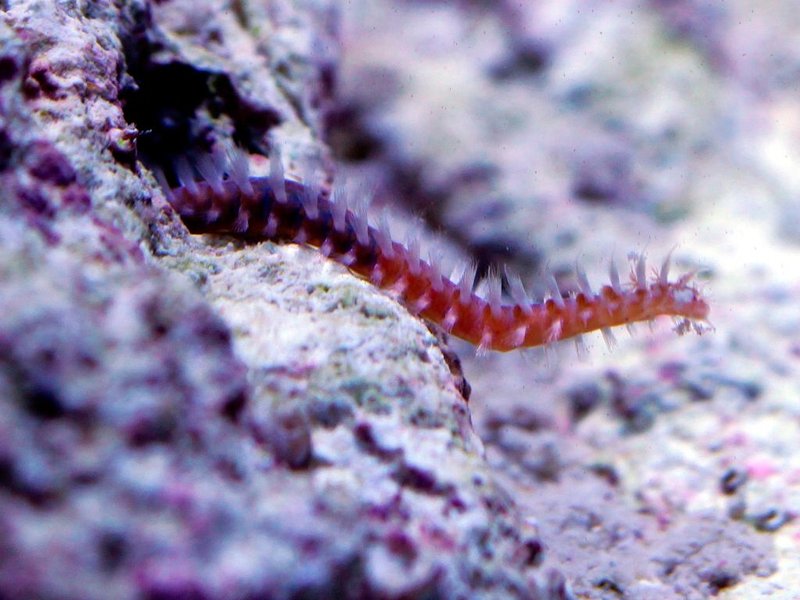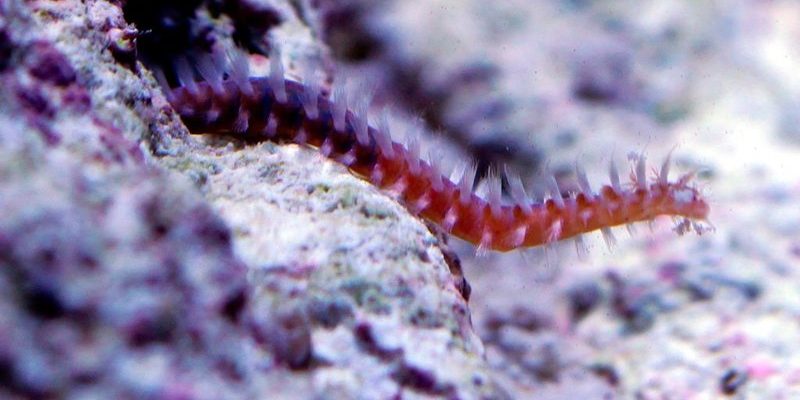
Bristle worms, also known as polychaetes, are a diverse group of segmented worms. With their vibrant colors and hairy bristles, they’re kind of the rock stars of the marine ecosystem. As we explore the potential for these worms to inhabit freshwater and brackish environments, we’ll look at what defines them, their habitats, and whether there’s any verifiable evidence to support this idea. Think of it like uncovering a treasure map; each piece we discover leads us closer to understanding these critters’ diverse habitats.
What Are Bristle Worms?
Before we dive into the depths of their habitat preferences, let’s get a clear picture of what bristle worms actually are. As mentioned, bristle worms belong to a class called Polychaeta. These worms are *characterized by their bristles*, which are tiny hair-like structures. The bristles serve multiple purposes, from aiding in movement to providing protection against predators.
Bristle worms can be found in various environments, mainly in marine habitats like ocean floors and coral reefs. They often come out at night to hunt for food, which includes organic material and detritus. With thousands of species under this category, they vary in size, shape, and color. Some bristle worms can grow as long as several feet, while others are quite tiny, barely measuring a few millimeters.
What’s fascinating is their body structure; they have a well-defined head with specialized appendages. You might say they are the Swiss Army knives of the worm world, equipped for various functions. This adaptability helps them thrive in different ocean conditions, making them an essential part of the marine ecosystem.
Understanding Freshwater and Brackish Water
Now, let’s break down what *freshwater* and *brackish water* actually mean. Freshwater refers to bodies of water with a low salt concentration, typically found in rivers, lakes, and ponds. Most freshwater environments have salinity levels of less than 0.5%. These are generally the homes of fish, amphibians, and a variety of invertebrates that require minimal salt.
Brackish water, on the other hand, is a mix of fresh and saltwater. Think of it as the middle ground between the two; it’s commonly found in estuaries where rivers meet the sea. The salinity levels in brackish water can vary but usually fall between 0.5% and 30%. This unique environment is rich in nutrients and offers diverse habitats for organisms, creating a thriving ecosystem.
Understanding these distinctions is crucial for discussing whether bristle worms can live in these types of water. As we move forward, we’ll explore how these environments might challenge or accommodate the needs of bristle worms.
Can Bristle Worms Survive in Freshwater?
The short answer? It’s unlikely. Bristle worms are primarily marine creatures adapted to salty environments. Their bodies are designed to process salt and maintain osmotic balance, which helps them thrive in high-salinity conditions. In freshwater, the low salt concentration would likely disrupt this balance, making survival challenging.
However, some research suggests that certain polychaete species may tolerate low salinity. These species demonstrate a remarkable adaptability that allows them to survive in brackish water for short periods. As you might guess, their survival in a completely freshwater environment would be rare and likely unsustainable in the long run.
Think of it this way: it’s like trying to grow a cactus in a bog. While it might survive for a while, it just isn’t built for that kind of environment. Similarly, while some bristle worms may handle low salinity, they’re not designed to flourish in freshwater habitats.
Exploring the Possibility of Brackish Bristle Worms
While the idea of freshwater bristle worms seems far-fetched, brackish environments present a more promising scenario. Since brackish water is a mix of salt and fresh, you might wonder if bristle worms could find a comfortable home there. The good news is that some species of bristle worms do thrive in brackish environments!
For instance, the *Boccardia* species is known to inhabit brackish waters and has shown an impressive ability to adapt to varying salinity levels. These worms can often be found in estuaries, where they contribute significantly to the ecosystem by breaking down organic matter and serving as food for various animals.
In brackish environments, these worms play the same roles they do in marine settings—filtering water and creating habitats for other organisms. It’s like discovering that some specific cacti can grow in a coastal area; while most can’t, a few have adapted beautifully to the changing salinity.
What Does This Mean for Aquarists?
If you’re an aquarist or just someone fascinated by marine life, the notion of keeping bristle worms in a freshwater aquarium is intriguing but complex. Given their primary adaptation to salty environments, bringing bristle worms into a freshwater setup is akin to throwing a saltwater fish into a lake—it just won’t work.
However, considering brackish water setups might be beneficial for both aquarists and bristle worm enthusiasts. Crafting a brackish aquarium provides a unique environment that can support various marine organisms, including certain bristle worms. This setup can mimic natural habitats more closely and offer a wonderful opportunity to observe the unique behaviors of these fascinating creatures.
If you’re opting for a brackish aquarium, remember to monitor salinity levels carefully. You wouldn’t want to send your bristle worms on an unwanted rollercoaster ride; stability is key. A gradual introduction of species can help maintain a balanced ecosystem.
The Role of Bristle Worms in Ecosystems
Bristle worms play an essential role in their ecosystems, even if they primarily dwell in saltwater. They break down organic matter and recycle nutrients back into the environment, promoting a healthy habitat for other marine life. They’re like nature’s cleanup crew, ensuring that detritus doesn’t accumulate and that energy flows smoothly through the ecosystem.
In brackish ecosystems, their role is just as vital. By breaking down organic materials and serving as a food source, they contribute positively to the food web. This intricate relationship underscores the importance of having diverse species in various habitats—each one has its part to play.
So, even if bristle worms can’t live in freshwater, their presence in saline and brackish environments is a reminder of the interconnectedness of life. Each organism, no matter how small, contributes to the greater whole.
Wrapping It Up
So, what have we learned about freshwater and brackish bristle worms? While the idea of bristle worms thriving in freshwater seems impractical, they do indeed find a place in brackish environments. Their adaptability is impressive, allowing them to contribute significantly to nutrient cycling and ecosystem health in these transitional waters.
As you explore the aquatic world, whether as an aquarist or a curious observer, keep an eye out for these remarkable creatures. Although they may not be suitable for every tank, their contributions to marine and brackish environments are far-reaching. Nature has a way of surprising us, and bristle worms are just one example of how life finds a niche, no matter the environment.

